Continue reading for our analysis...
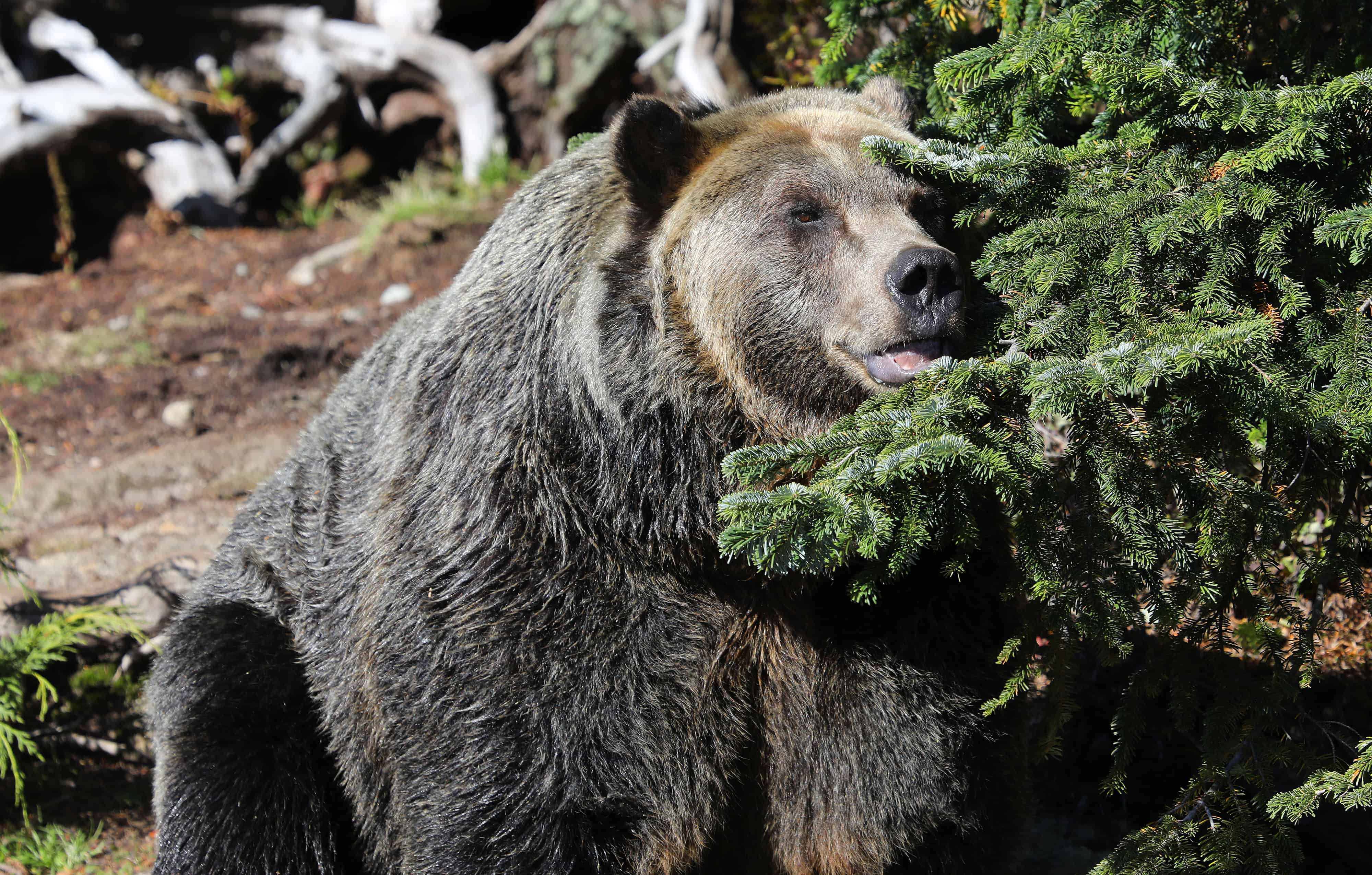
This footage was captured at the magnificent Glacier National Park in Montana, USA. In the clip below, we get to see some hikers on a narrow rocky path who are being followed by a grizzly. Despite their best efforts, the bear is persistent, and it takes a while to put it off.
Identifying a Grizzly Bear

Grizzly bears can be at their most dangerous when they first emerge from hibernation.
©Paul Knowles/Shutterstock.com
The national park authorities have issued some tips on bear identification. In the park, you can encounter both grizzlies (a subspecies of brown bears) and black bears. They explain that grizzlies have a prominent shoulder hump, whereas black bears have no shoulder hump. Also, grizzly bears have dish-shaped faces, but black bears have straight profiles. Finally, if you get close enough, you can see that black bears have dark-colored front claws that are one and a half inches long compared to the two to four-inch-long light-colored claws of the grizzly bear.
How to Act if You Come Across a Bear
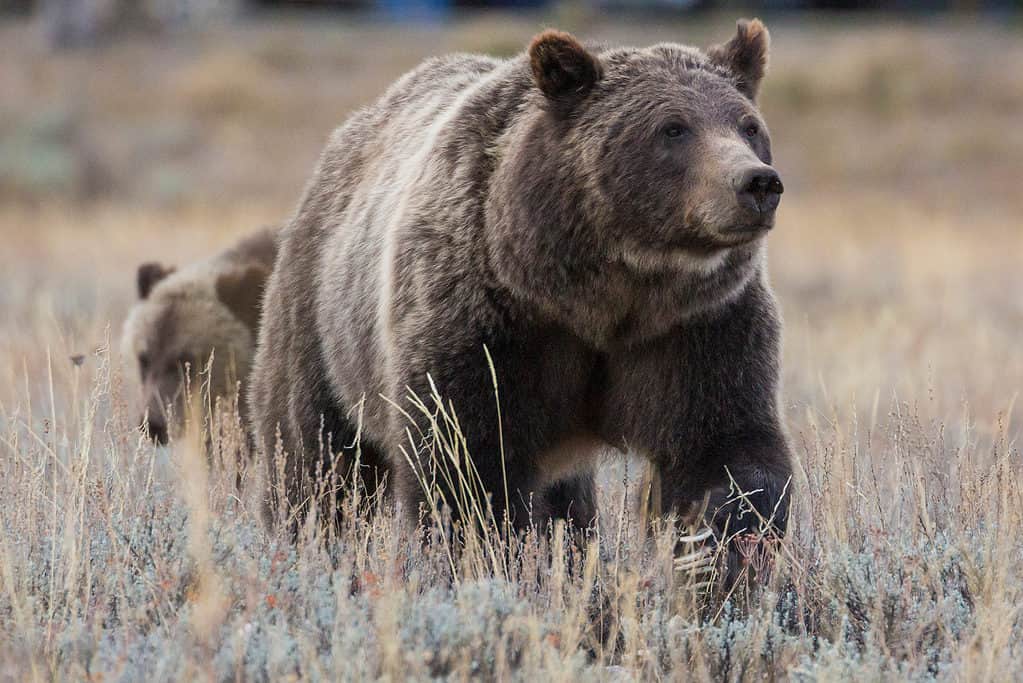
Bears are normally too busy foraging for berries and insects to bother eating humans.
©BlueBarronPhoto/Shutterstock.com
Grizzly bears are large and powerful animals that can cause serious injury if they choose to do so. They may hang around campsites and picnic sites because they have learned that this is where the food is! However, you should always be safely 100 yards away from them and never feed them.
But what about in this situation when one is actually following you? The official advice is to get out of its way so that it can pass. However, if the bear insists on approaching you (as we see here) in a non-defensive manner, there are other things that you can do. A bear shows defensive behavior by swaying or lowering their head, huffing, and standing on their hind legs. The bear in this clip looks pretty relaxed and simply curious.
How to Scare off an Approaching Non-defensive Bear
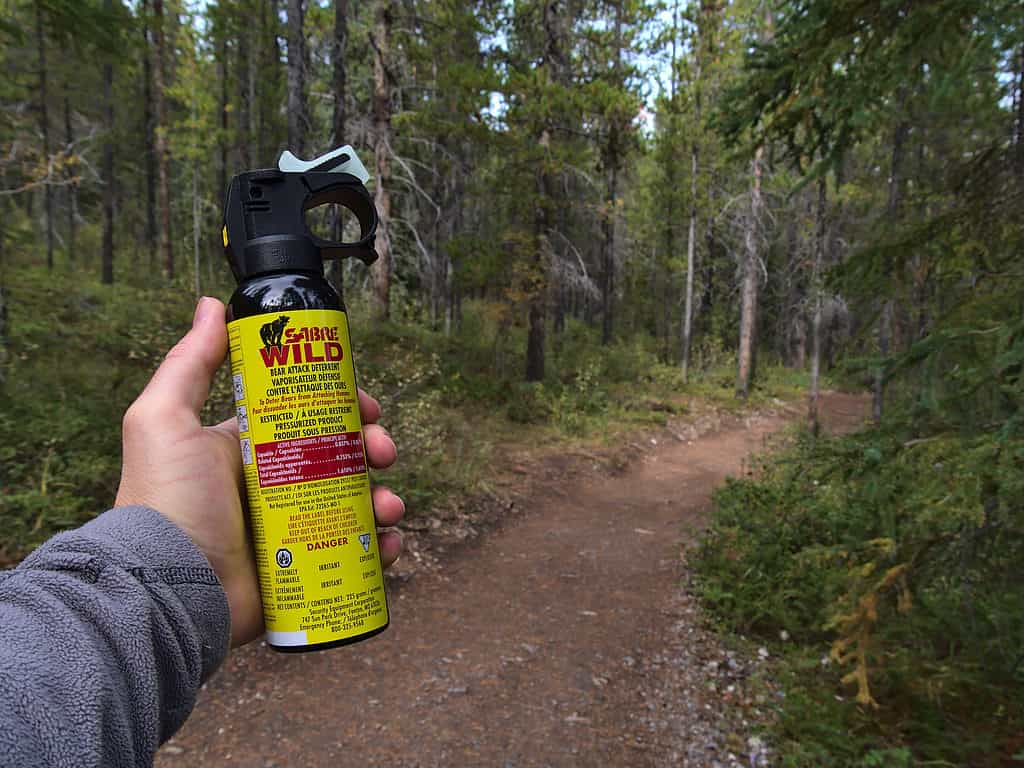
Be sure to spray bear-spray downwind from yourself.
©iStock.com/Timon Schneider
In these circumstances, it is best to gather together and make a noise to discourage it from approaching. Also, get ready to deploy bear spray – you can hear the hikers discussing this in the clip. Bear spray is an aerosol containing non-toxic substances that temporarily incapacitates bears. Bear spray often contains red pepper oil (oleoresin of capsaicin), which inflames the eyes and upper respiratory system of the bear but wears off with time. It is designed to be sprayed in the bear’s face, but factors such as wind, rain, and temperature can influence how effective it is.
Is It Normal For Grizzly Bears to Attack Humans?
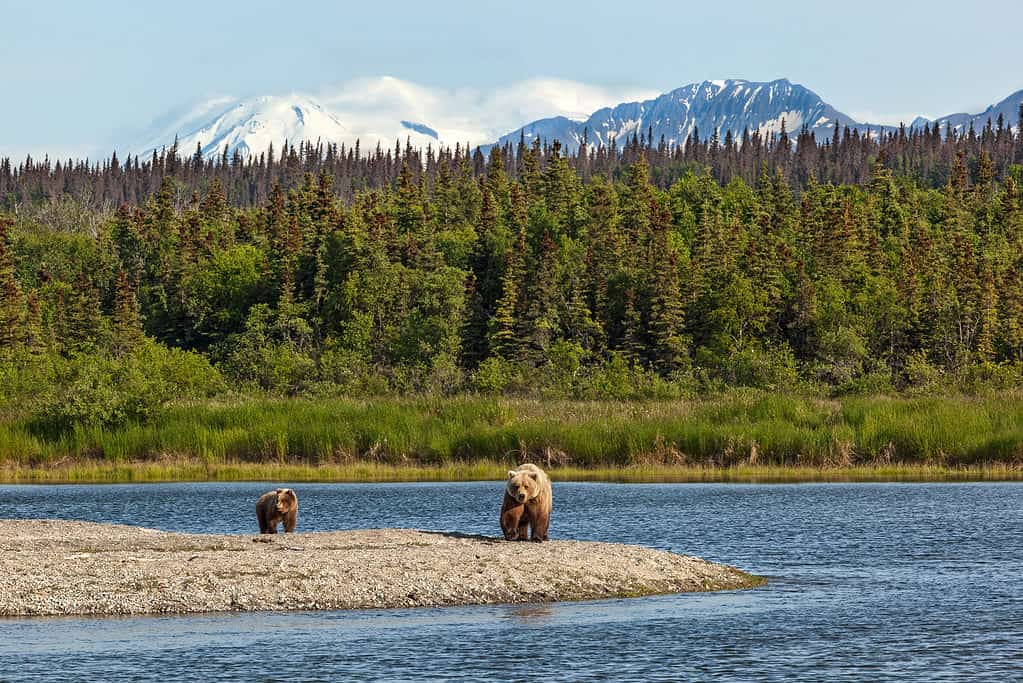
Bear attacks on humans are exceedingly rare. Bears would rather eat fish.
©Manamana/Shutterstock.com
Grizzly bears have a diverse diet that primarily consists of vegetation, such as grasses, berries, and roots. However, they are also opportunistic predators and will occasionally consume meat sources like fish or small mammals. While grizzly bears will also scavenge carcasses left behind by other animals, their natural inclination is not to actively seek out humans as prey.
Instances of grizzly bear attacks on humans are generally rare but can occur in certain situations. These incidents often arise from encounters when a bear feels threatened or startled by human presence, especially if the bear perceives its cubs or food source to be at risk. It is important for individuals exploring areas inhabited by grizzlies to exercise caution and adhere to recommended safety guidelines.
Understanding grizzly bear behavior is crucial in minimizing potential conflicts between these majestic creatures and humans who share their habitat. Conservation efforts play a significant role in preserving these apex predators’ habitats while educating people about responsible coexistence with wildlife. By recognizing the normal dietary patterns of grizzly bears and respecting their space, we can foster harmony between species while ensuring our safety in their presence.
How Large Do Grizzly Bears Get?
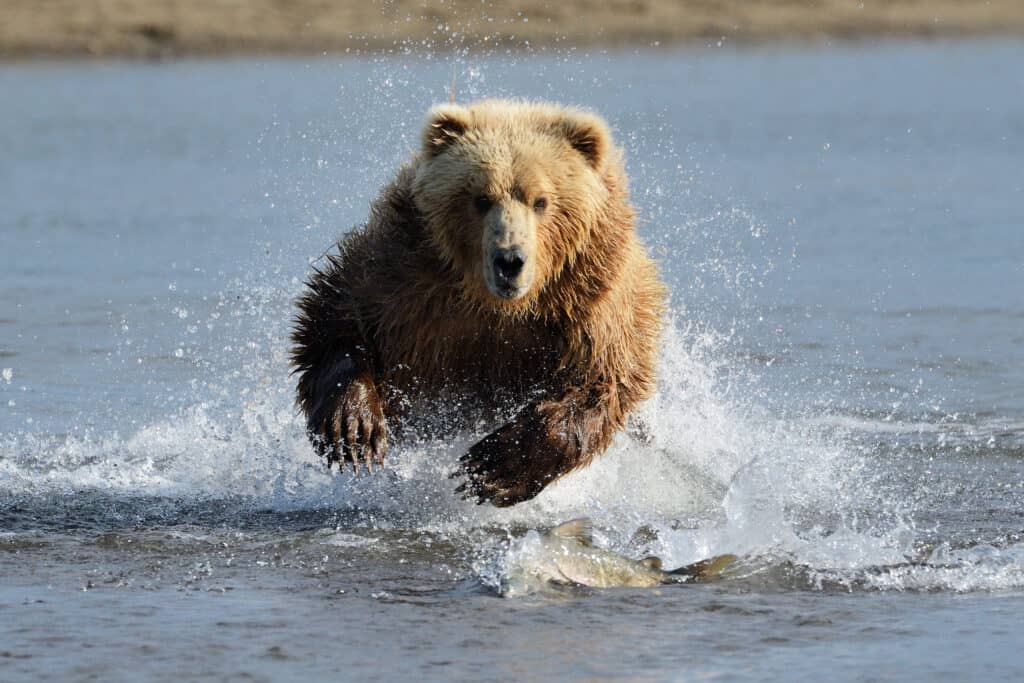
Grizzly bears can grow as large as over 700 pounds or more.
©AndreAnita/Shutterstock.com
Grizzly bears tip the scales at over 700 pounds or more. Among them, males outmatch females in weight, with males ranging from approximately 400 to 600 pounds. In the lower 48 states, sizeable females can weigh between 250 to 350 pounds
The record for the largest grizzly bear ever captured stands at an impressive 1200 lbs. This measurement was determined based on the dimensions of the bear’s skull, as the bear was not alive when found. Uncovered in 1976 by a taxidermist, the skull holds this remarkable title.
Thank you for reading! Have some feedback for us? Contact the AZ Animals editorial team.







